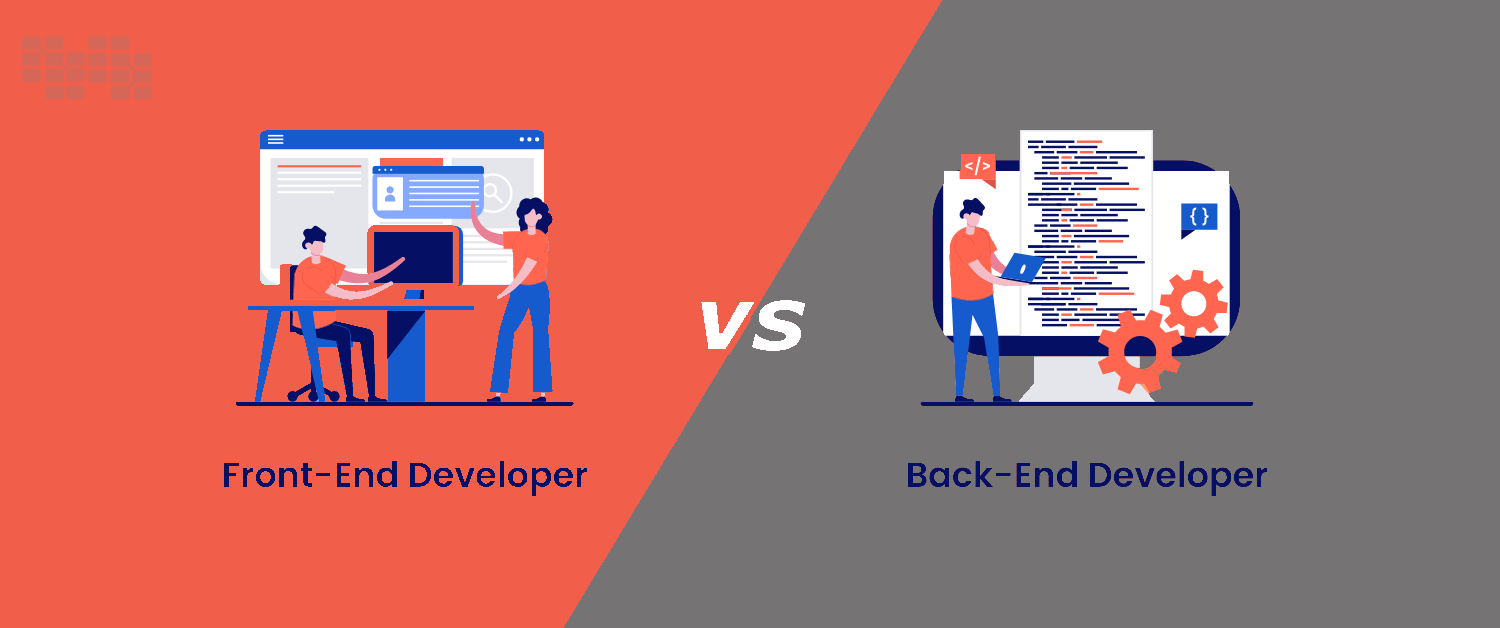Front-End vs. Back-End Web Development: What's the Difference?

Websites and web apps use front-end and back-end development to function. While distinct, these two sides work together for great user experiences. Understanding their unique roles provides helpful context.
Front-End Development Focuses on User Interface
Front-end development concentrates on the user interface (UI) - the visuals and interactions seen on pages when visiting a website. Coding languages manipulate UI elements users click or view.
Back-end development Focuses on Server Functionality
Meanwhile, back-end development involves behind-the-scenes server-side functionality powering dynamic site behavior like saving data. Back-end code handles data flows between the database and UI displaying retrieved information.
Front-End Uses Three Core Building Blocks
Front-end developers utilize HTML for general content structure, CSS for presentation styling, and JavaScript for enabling interactivity on sites/apps. JavaScript now also handles much data loading/saving.
Back-End Relies on Programming Frameworks
Popular server-side programming languages like PHP, Python, Java, and Ruby on Rails serve back-end roles. These support frameworks and libraries that facilitate practical functionalities like user authentication.
Front-End Determines Look, Feel, and Interactions
Careful front-end coding ensures websites have appealing visual designs that align with brand aesthetics through elements colors, font choices, and component layouts. It also defines dynamic interface behaviors.
Back-End Enables Crucial Behind-The-Scenes Workflows
The back end seamlessly handles critical yet invisible operations like securely submitting contact form contents to company email accounts, processing payments, facilitating file uploads/downloads, and pulling specific user data from databases to display dynamically on complex dashboards.
Front-End Providing Intuitive User Experience
Front-end focuses on an intuitive, accessible user experience by crafting responsive page layouts, navigation menus, calls-to-action and journey flows tailored to various devices accessing the product.
Back-End Maintaining Site Performance
Carefully written back-end application logic sustains site performance at scale through mechanisms like servers for handling concurrent visitors, caching for fast content delivery, and robust databases with sufficient storage capacity and retrieval speed as traffic volumes or stored data grow over time.
While distinct disciplines, site functioning relies on front-end and back-end developers collaborating closely to transform products from concept to user-friendly reality matching initially envisioned experiences and workflows.

